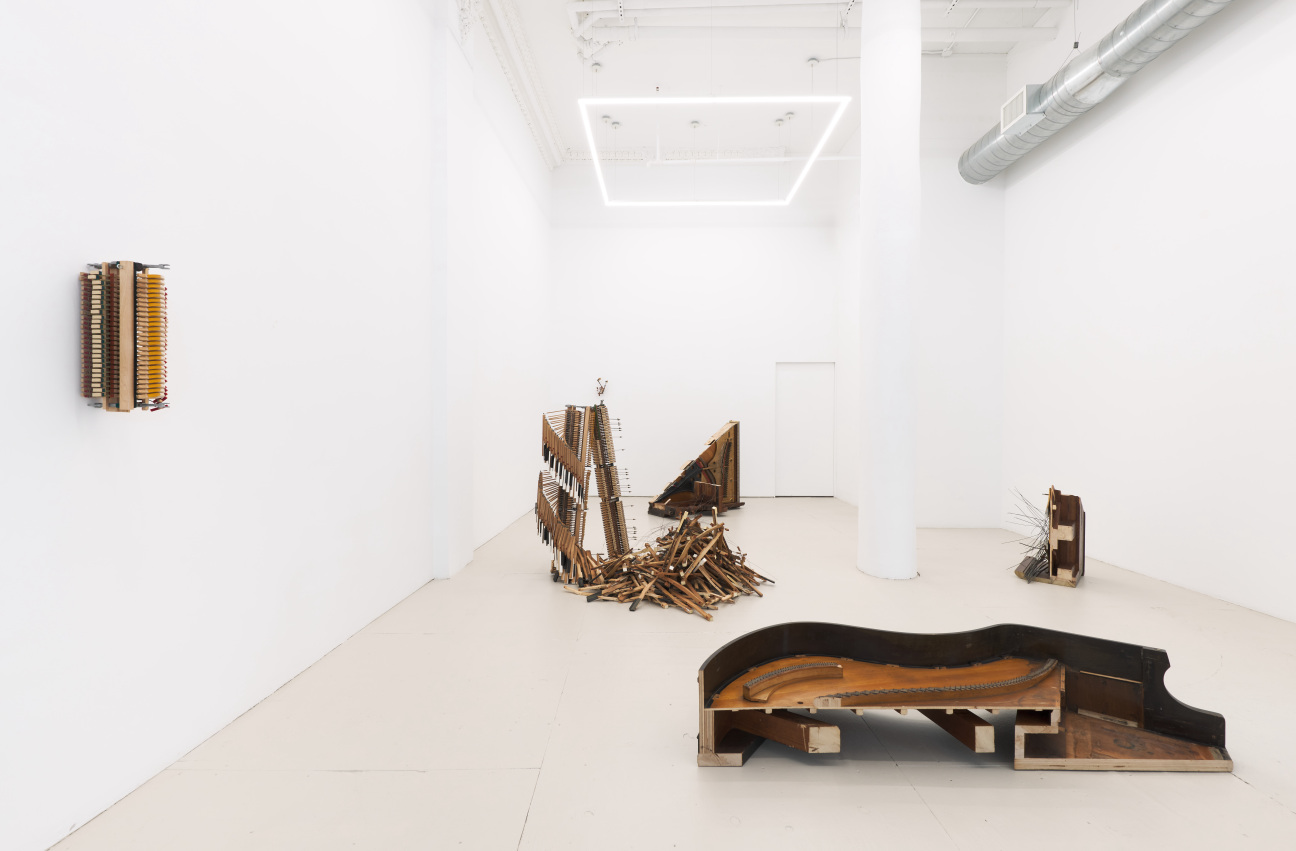
A standard upright or baby grand piano can weigh anywhere from 500 to 800 pounds.
In “Passages,” Gozié Ojini’s first solo show in New York, that mass has been fractured into six freestanding sculptures, which populate Silke Lindner’s Tribeca storefront like orphaned limbs. Pull saws, angle grinders, a waterjet, his own hands: these are the instruments the New Haven-based, Los Angeles-born artist wielded over the recovered musical instruments (which were headed for the scrapyard), turning them into containers for new meaning and memories. In their transmutation, Ojini effectively renders the objects mute, yet their presence reverberates on other planes. Here, he troubles the categories and ramifications of value, questions the shelf life of ownership, and unspools the parallels between craft and memory.
To mark the show, which is on view through June 8, the sculptor sat down with curator and 52 Walker Director Ebony L. Haynes to talk about obsolescence, untouched pianos, and the stakes of selling work.
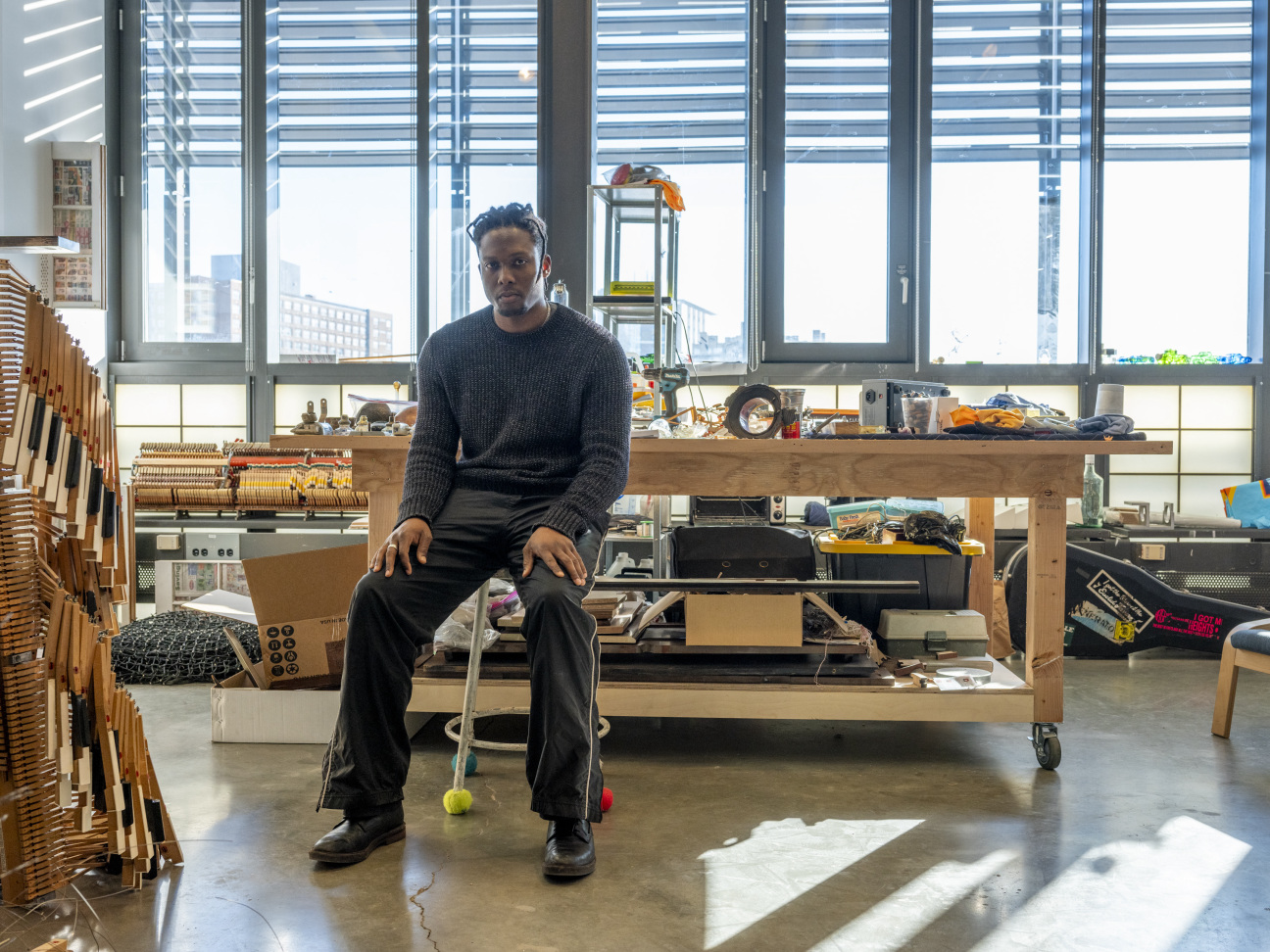
Ebony L. Haynes: This show is all piano. What is your interest or history with music and musical instruments?
Gozié Ojini: I don't play any instruments, and I feel like my interest in the musical side of it is subliminal. My older brother and sister are really interested in music production, singing, and songwriting. My mom used to work at Motown, but she was a payroll manager. But the proximity to music, it's always been part of my life. Maybe this is my way of playing the piano.
Haynes: I was like, “I hope we don't get into this conversation, and he tells me about playing the piano since he was born.”
Ojini: No, no, it's not like that. I do think that people who play piano feel connected to the work, which I find really encouraging. People feel like they're inside a piano, that's where they want to be. It's kind of this romantic relationship to the instrument. But my interest is really in getting at these spiritual things from the literal or the material. It's really about weight, you know? The pianos are all titled by their weight. And they definitely signal class and virtuosity, but, as we find more contemporary ways of signaling those things with more contemporary commodities, the value of those pianos has completely decreased.
Haynes: There’s something subversive about not just taking away the virtue signaling of this object but creating something that seems like it was meant to be something else. It’s almost like losing a visual cue or something that's recognizable. Aura stays within the material, and it becomes a new material … There’s almost this ceremonial aspect to creating. Like associating some kind of vanity to the objects that you're taking apart … I want to speak more about the works themselves and embodying memory, the actual kind of resonance with the material.
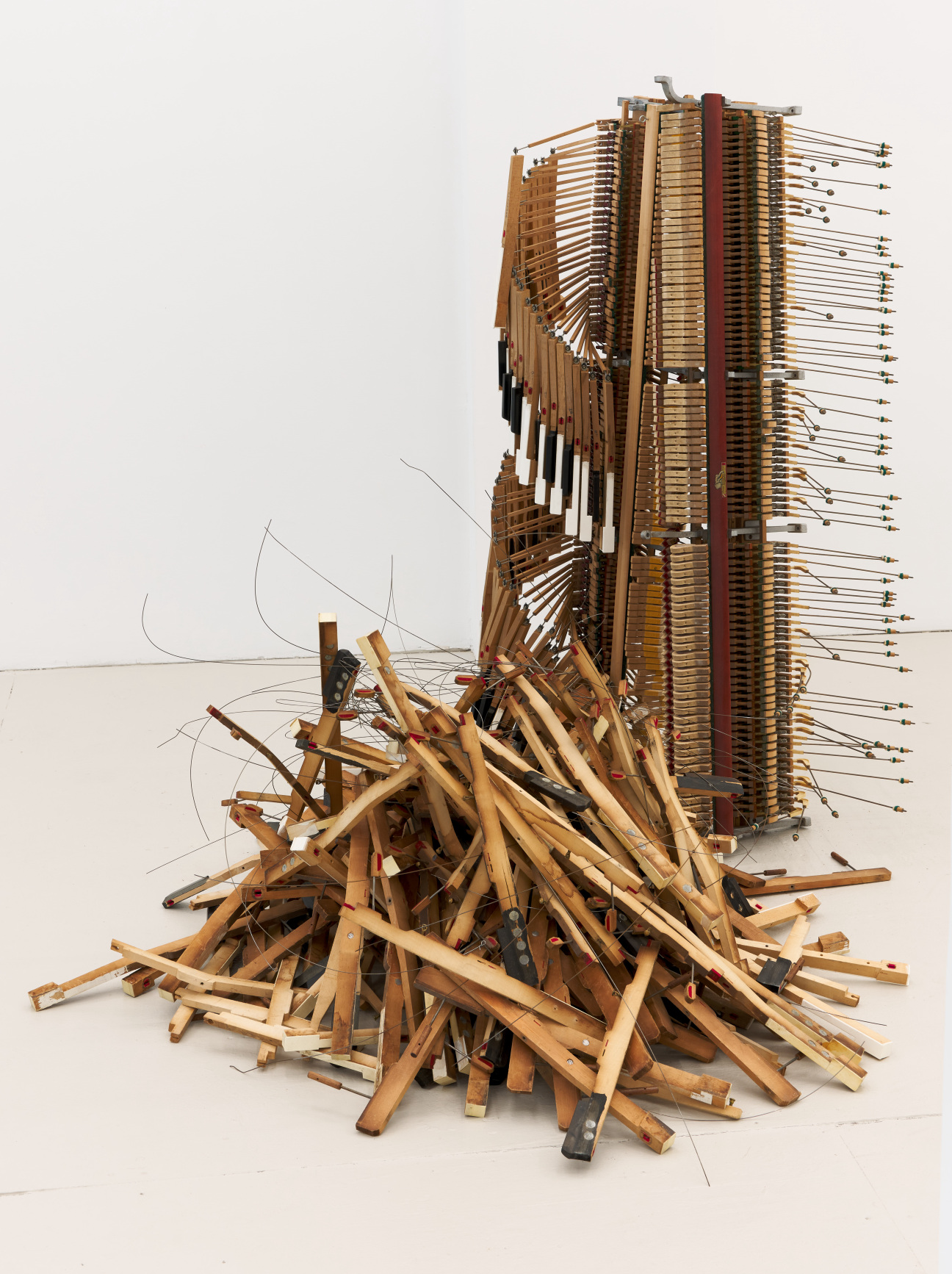
Ojini: It was definitely a meditation that took a while. I needed to spend time with the pianos to know what I wanted to do with them in the first place. They signify all these things, but inherently, they're also objects that we use to create sound—a particular kind of sound that requires years and years of training. It takes almost a year to create a Steinway piano. 80% of the process is by hand, there's all these intricate aspects of them. What goes into their creation, and the time it takes to be proficient at using the piano, just means that these objects are imbued with so much human spirit. Spirituality, for me, does come from very material places. Knowing that there are literally hundreds of people touching these things over decades feels really powerful.
My first instinct was to cut them, and I felt like I had to investigate why that was. I had to try to understand what it means for this one sweeping gesture to bump up against all these multiple intricate gestures. I don't think I destroyed the pianos; I think there is a system at large that devalues the object. Literally somebody was like, “I'm going to crush it at 12 o'clock. If you don't come pick it up, that will happen.” In a lot of ways, what I'm doing is more preserving the values and the memory of the people that touched it.
Haynes: You're talking about the life of it. Traditionally, it's not the kind of object that is made with a sort of capitalistic planned obsolescence; it's not a VCR or something that is going to be trumped by a new technology. The intention, which is likely why it takes so long to create, is not for it to become obsolete. The idea that it needs to be destroyed eventually, or someone's going to smash it, is interesting. Like, does it ever feel okay to just destroy such a beautifully crafted object?
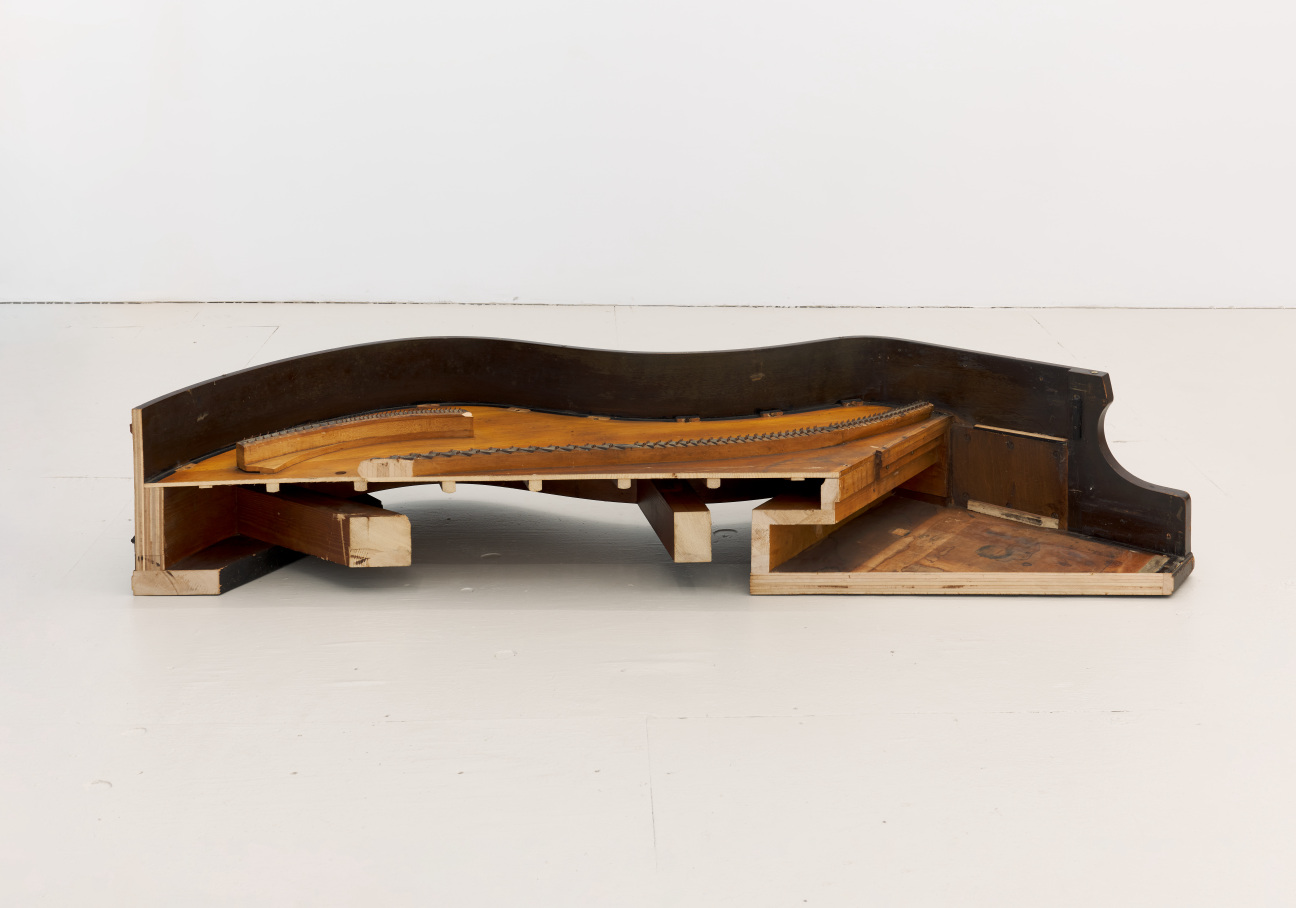
Ojini: The pianos are so much about legacy and the aspiration for the next generation to bring music into the lives of the person who purchased it. They used to call them forever loans. It's the idea that you buy this piano, and you just keep paying for it for the rest of your life because it's worthy of that investment. Me being untrained is a crucial part of it: If I were classically trained in piano, I think something of that discipline would stop me from imagining trying to do it. But there’s some kind of inherent impulse. You can kind of imagine what that piano sounded like when the tension was released from those strings.
There's precedent for that too—like Italian artists and Dadaists literally taking a sledgehammer to a piano to imagine a new sound. I feel connected to that, but I also feel like there's something about silence. I want to try to pinpoint what that means, what silence is like, especially within the context of a Black person. What does it mean to put the trumpet down or to save your breath, or to not perform. It feels impossible.
Haynes: It always becomes this meta performance. Existing as a Black person is a performance in some way, responding to projections onto you, trying to disprove stereotypes, not wanting to give into them. It's an interesting question to wonder if there could be actual pause and silence, or a gesture that is not performative. Have you ever seen Mary Poppins?
Ojini: Yes!
Haynes: There's a scene where there's this general who keeps time for the town with this cannon that goes off, and when it goes off, everything shakes. The Banks family has this grand piano. The cannon goes off, everything shakes, and the piano slides up next to him. Then he hits the keys, and yells at his wife, “This piano is out of tune, get it fixed.” His wife's like, “I know you don't play the piano,” and he says, “That is entirely besides the point.” The point is that the piano that's in my home should be tuned and ready. Like, for what? All these people have Architectural Digest shots of their homes, and there are all these pianos around. They could very well play, but I often assume they do not. It's like having crystal instead of IKEA glasses. Like who's going to buy these sculptures? People will buy them and then have the resonance of this object revalued and imbued with different, new memories.
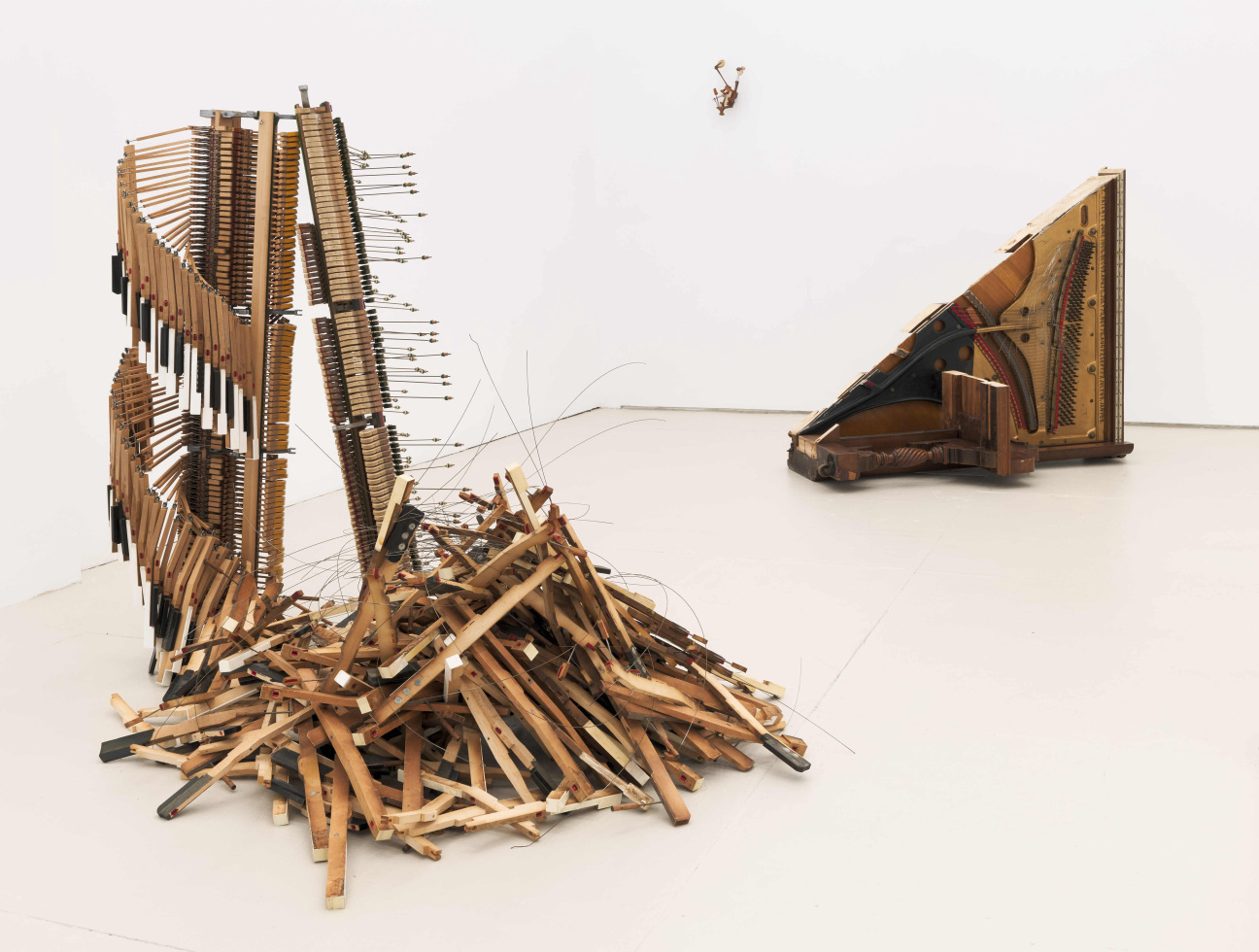
Ojini: At one point, I had studio visits where people were like, “Well, you gotta get these out of here. You didn't invest anything in them, technically.” And they're thinking monetarily; like other sculptors, they're casting, and spending hundreds of dollars on silicone, which I've done too, but for the first few objects in my studio to be this massive, they're kind of thinking that I didn't put that much of monetary investment into into them. I rebuttal by saying that my labor and my time is the cost, and I want to value those.
Haynes: Absolutely. Why does something become more resolved, or stronger because of how much is spent to make it?
Ojini: Or how much you care to keep it a part of your life based on those value systems. Like I said earlier, the titles of the work are based on the weight of them. But I do think there's something of a red herring there, because there’s this kind of invisible or immaterial weight to them as well. Something emotional and sentimental. And something that signals something to aspire to. That's part of what I want to be understood about the work.
Haynes: When you're about to use that saw, or cut, is it premeditated? Or is it more of a performance?
Ojini: I'm still trying to understand that because some of it is impulse. [But] there is consideration that needs to be had about the meticulous labor that goes into their creation. What is my contribution? Am I going to care for that? There's something about trusting yourself, which you hear a lot in grad school, and just as an artist in general, which feels really difficult to do. But those moments actually feel the most gratifying.
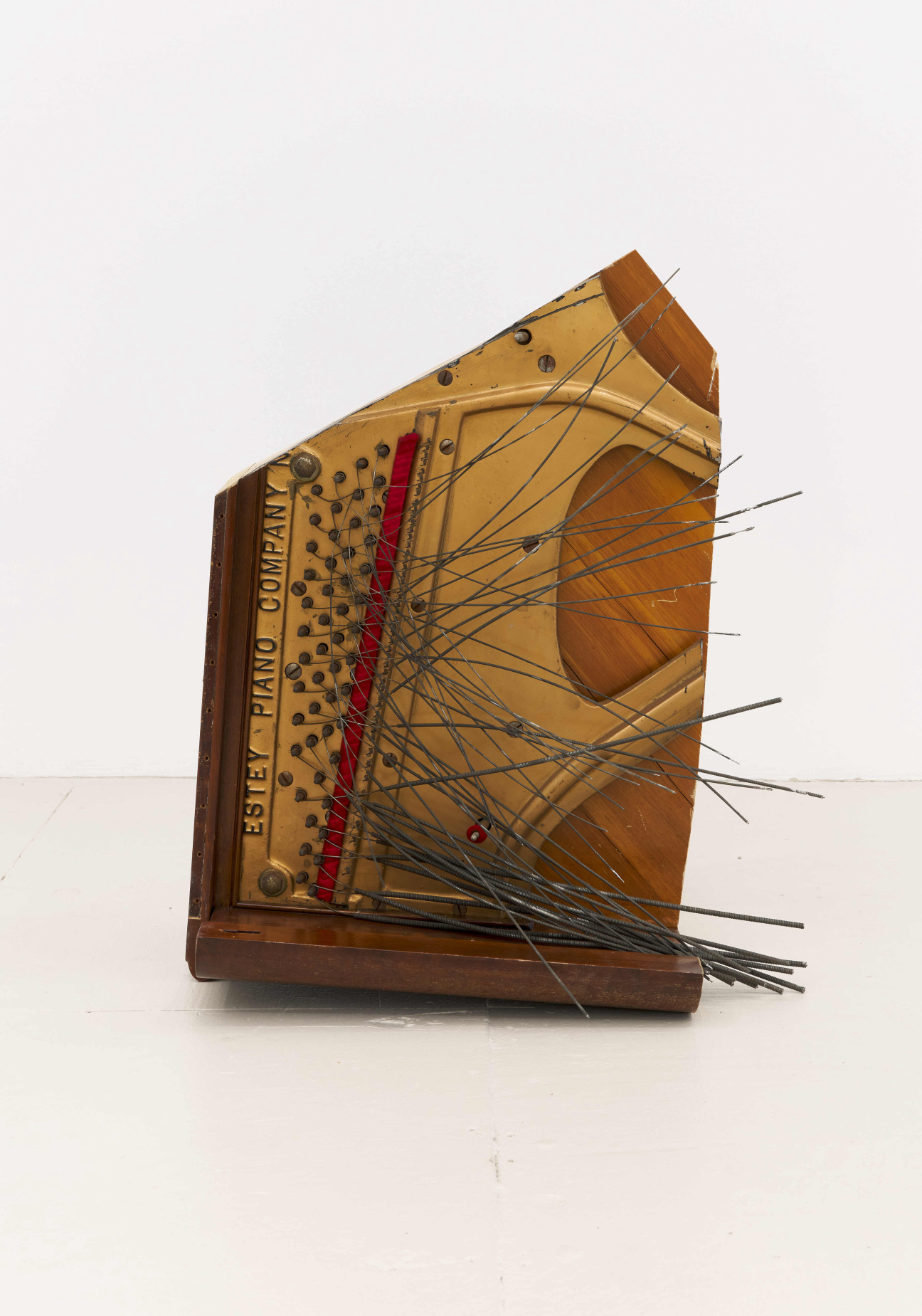
Haynes: It's always exciting to not have things figured out. To have it figured out would mean that it's complete. I always think about who's going to acquire the work. Some artists have preferences or hopes for who might live with their work after, and it also depends on what you are portraying with the work. For example, if it is an image of a Black ex-slave with lynch marks on his back. I had a presentation I did once with Pope.L, and it was a series of his called “Skin Set Drawings.” There were giant 2-D works with language, and it was like a play on language. So “yellow people are dirt, white people are the sun, pink people are slimy.” He was just really doing some poetic writing free wordplay. And we had one that said “Black people are shit.” I remember having a conversation with a collector who was a huge fan of the artist and his practice. And I'm like, “This is the strongest one.” She just very honestly said to me, “How can I speak to this work in my home?”
Ojini: I feel like it's about having the willingness to build the language around that if you do have it in your home. How do you speak to it? Maybe it's about admitting some limitation to that. I similarly have this issue about the consumption of Black bodies and that's part of why a lot of my work isn’t figurative. But some of the works that I'm developing are silhouettes, cut out of pieces of decorative wooden furniture, of my family's portraits. And I did a series of work prior that had the actual images embedded into the wood. They were copies, but even so, they're still images of Black people that are people who don't have access to their memory as much as I do. And what does it mean to sell that? When I think about the pianos, I do consider them bodily and I do consider them this Brown object that will ideally go somewhere. But when I think about the ideal collector, it’s someone who would share that sentiment with me of trying your best to hold onto something that feels like bygone. I need someone who understands that and who is willing to help me take that burden on.
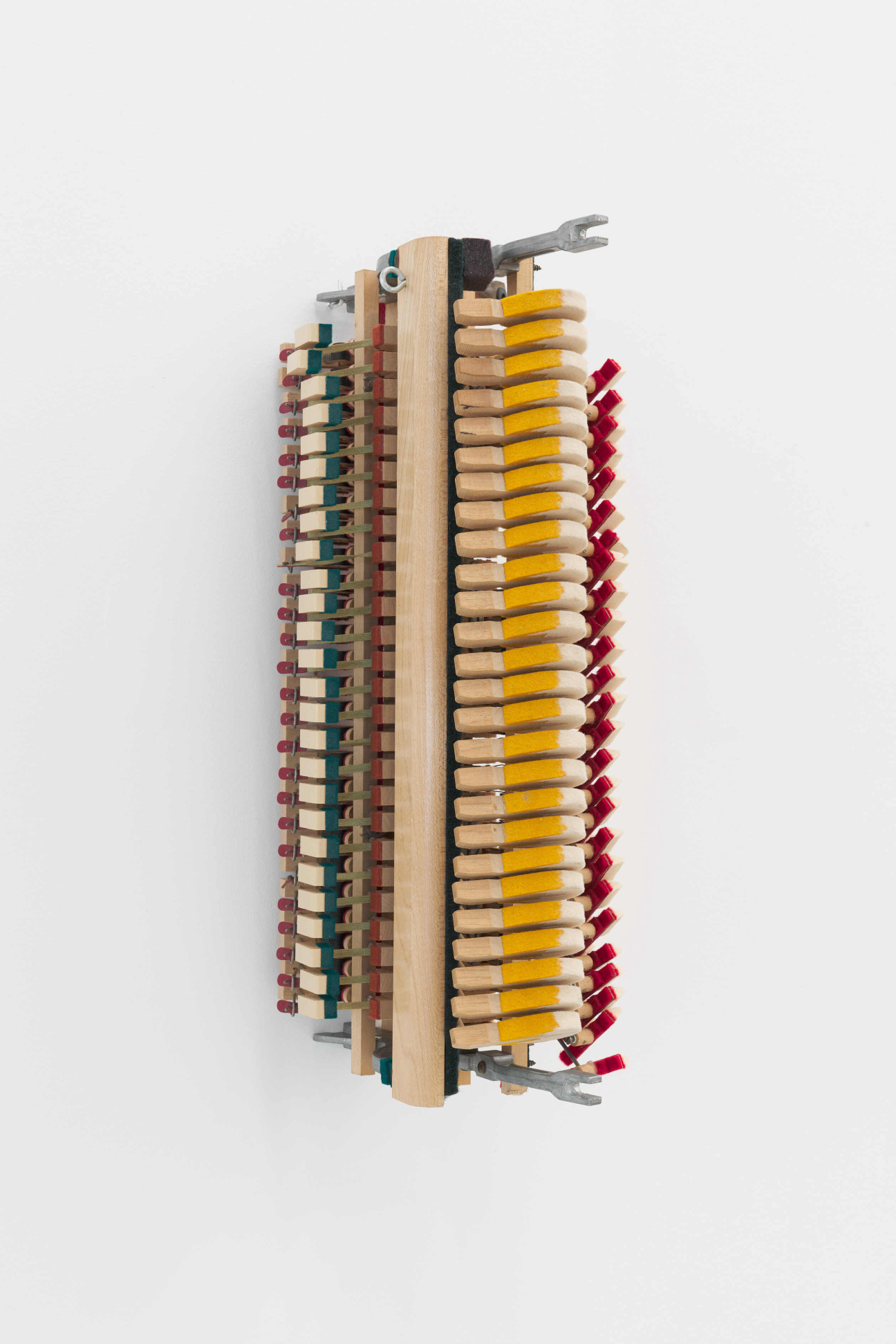
Haynes: I'm not trying to imply that you're suggesting your collectors should or must be Black at all, but when that becomes a consideration, we must manage our expectations just because by statistics and history, it's proven that there will just not be as many Black people who are in a position to afford certain artworks as white people. That is institutional, systemic racism … It's interesting to think of these practices and narratives imbued with artworks, knowing that the majority of the people who will acquire them will be white. And I'm not also suggesting a person that is not Black cannot love and understand the narrative for and appreciate artworks at all.
Ojini: I made the work for people that feel connected to what I'm doing and that tends to be people who are or have been in more precarious positions. I want those people to be able to enjoy the work and to experience it. At the same time, I need to make rent for the summer, and I need to eat.
Haynes: I'm very vocal about why it's important for artists of any career stage, of any race, of any practice to be afforded an opportunity to sell their work. This is part of the art world. Artists should feel proud of selling an artwork and putting that money towards their practice as history has done for artists for generations. And the more money you make, the more power you can have to inform decisions for your gallery. You can put those works out into the world yourself. Once you're able to confirm you can survive and continue to make them. You can make those changes later.
There's no shame in selling and making money. I said to an artist friend recently, “Accountants don't go to school to be accountants and then do someone's taxes and not get paid for it. You've gone, you have studied. There's also this deep, rich tradition you are in. It's not a hobby. It's weird to think that somebody should not be making a living off of what their profession is. For any other profession, this conversation is moot. We studied it, it is a profession like any other.”
"Passages" by Gozié Ojini is on view at Silke Lindner in New York through June 8, 2024.










 in your life?
in your life?

